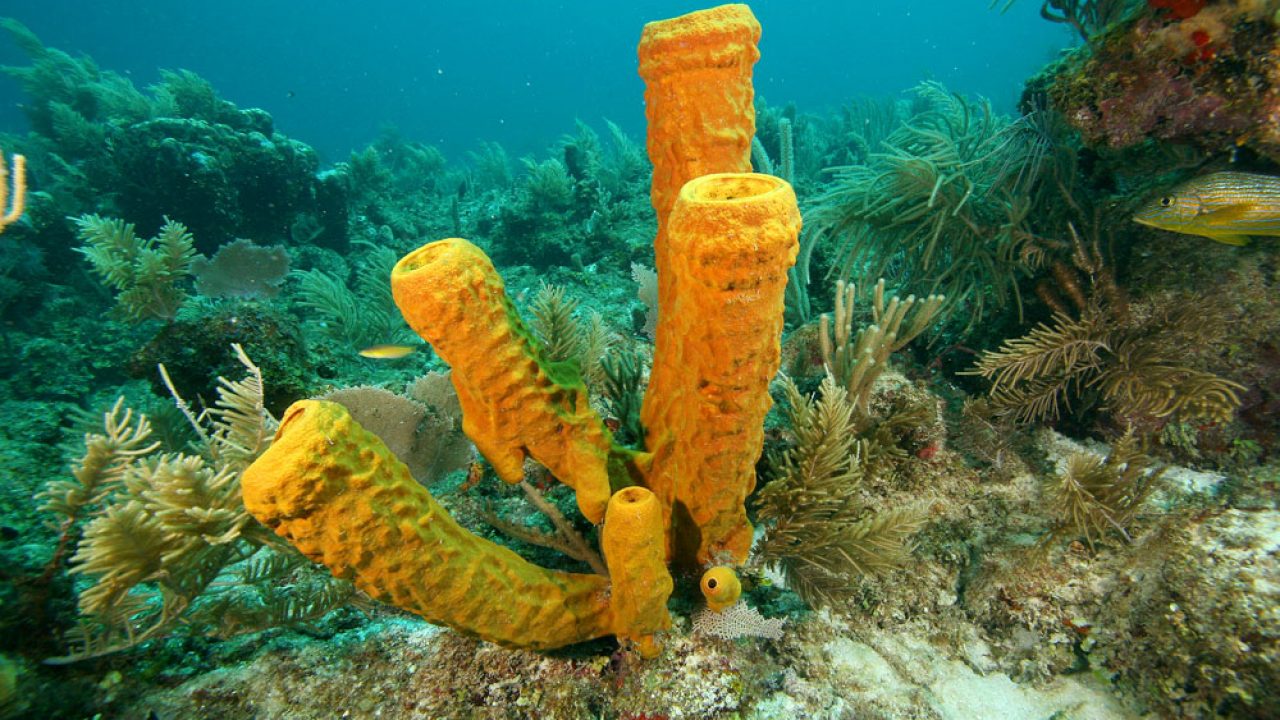
Sponges, often overlooked in the grand tapestry of the animal kingdom, possess a remarkable array of characteristics that set them apart from other creatures. These fascinating organisms, which belong to the phylum Porifera, have a unique biological makeup and play crucial roles in marine ecosystems. As we delve into the world of sponges, we uncover a wealth of intriguing facts that shed light on their significance and diversity. From their ancient lineage to their surprising ecological contributions, sponges offer a captivating glimpse into the wonders of the natural world. Let's embark on a journey to explore 10 remarkable facts about sponges, unveiling the mysteries and marvels of these enigmatic creatures.
Key Takeaways:
- Sponges, the ancient filter feeders, come in thousands of species, play a vital role in marine ecosystems, and have amazing regenerative abilities, making them a fascinating subject for scientific research.
- With their diverse shapes, colors, and bioactive compounds, sponges continue to inspire scientists and enthusiasts, showcasing their enduring significance in the natural world and the wonders of marine life.
Sponges are among the oldest multicellular organisms on Earth.
Dating back over 500 million years, sponges have an ancient lineage, making them one of the earliest forms of multicellular life on the planet.
Sponges are simple animals that belong to the phylum Porifera. They lack tissues and organs, yet their unique cellular structure enables them to efficiently filter and consume nutrients from the surrounding water.
There are over 5,000 known species of sponges.
Sponges exhibit remarkable diversity, with an estimated 5,000 to 10,000 species inhabiting various aquatic habitats, including saltwater and freshwater environments.
These species vary greatly in size, shape, and color, ranging from small, encrusting forms to large, vase-shaped structures.
Sponges play a crucial role in marine ecosystems.
As filter feeders, sponges help maintain water quality by removing bacteria and organic particles. Additionally, they provide habitat and refuge for a wide array of marine organisms, contributing to the overall biodiversity of coral reefs and other underwater ecosystems.
Sponges possess remarkable regenerative abilities.
When fragmented or damaged, sponges can regenerate and reassemble their body structures, showcasing an extraordinary capacity for self-repair and growth.
This remarkable regenerative capability has captured the interest of researchers seeking insights into tissue regeneration and the potential applications in medical science.
Sponges have been used by humans for centuries.
Throughout history, humans have utilized sponges for various purposes, including bathing, cleaning, and even painting. The soft and porous nature of natural sponges makes them ideal for absorbing liquids and exfoliating the skin.
Some species of sponges produce bioactive compounds.
Certain sponge species have been found to produce bioactive compounds with potential pharmaceutical applications. These compounds exhibit diverse biological activities, including antimicrobial, antiviral, and anticancer properties, sparking interest in their potential for drug discovery and development.
Sponges are hermaphroditic.
Most sponge species are hermaphroditic, possessing both male and female reproductive organs. This unique reproductive strategy enables sponges to efficiently fertilize their eggs and maximize their reproductive success in aquatic environments.
Sponges lack a centralized nervous system.
Unlike more complex animals, sponges lack a centralized nervous system. Instead, they rely on a network of specialized cells to coordinate essential functions, such as water flow, feeding, and response to environmental stimuli.
Sponges exhibit remarkable ecological resilience.
Sponges have demonstrated resilience in the face of environmental stressors, such as pollution and climate change. Their ability to adapt to changing conditions and thrive in diverse habitats underscores their ecological importance and resilience.
Sponge biodiversity continues to inspire scientific research.
The rich diversity of sponge species and their unique biological features continue to inspire scientific exploration and research. From uncovering novel bioactive compounds to understanding their ecological roles, sponges remain a subject of fascination and discovery in the field of marine biology.
Sponges, with their ancient origins and remarkable biological attributes, continue to captivate scientists and enthusiasts alike, underscoring their enduring significance in the natural world.
The "10 Facts About Sponges" provide a glimpse into the captivating world of these extraordinary organisms, inviting further exploration and appreciation for the diverse wonders of marine life.
Conclusion
In conclusion, sponges are fascinating creatures that play vital roles in marine ecosystems. Their unique characteristics, such as filter-feeding and symbiotic relationships, contribute to the health of underwater environments. As simple animals, sponges have evolved remarkable adaptations to thrive in diverse habitats, showcasing their resilience and biological significance. Understanding these 10 intriguing facts about sponges sheds light on their ecological importance and evolutionary marvels, highlighting the need for conservation efforts to protect these ancient organisms for future generations to marvel at.
FAQs
Are all sponges found in the ocean?
Sponges are primarily marine organisms, but some species can also inhabit freshwater environments, such as lakes and rivers. However, the majority of sponges are indeed found in the ocean, where they contribute to the marine ecosystem's balance.
Do sponges have any commercial uses?
Yes, sponges have been used for centuries by humans for various purposes. Natural sponges are harvested for bathing, cleaning, and painting, while certain compounds extracted from sponges have shown potential in pharmaceutical and biomedical research, making them valuable to industries and scientific advancements.
Sponges are truly remarkable creatures that have captivated humans for centuries. Their unique abilities and ecological importance make them a fascinating subject of study. If you're eager to learn more about specific types of sponges, we've got you covered. Dive into the world of vase sponges and uncover their intriguing characteristics. For a fun twist, explore the hilarious adventures of everyone's favorite animated sponge in The SpongeBob SquarePants Movie. And if you're curious about the wonders of sea sponges, embark on a journey to discover their incredible underwater world.
Was this page helpful?
Our commitment to delivering trustworthy and engaging content is at the heart of what we do. Each fact on our site is contributed by real users like you, bringing a wealth of diverse insights and information. To ensure the highest standards of accuracy and reliability, our dedicated editors meticulously review each submission. This process guarantees that the facts we share are not only fascinating but also credible. Trust in our commitment to quality and authenticity as you explore and learn with us.


